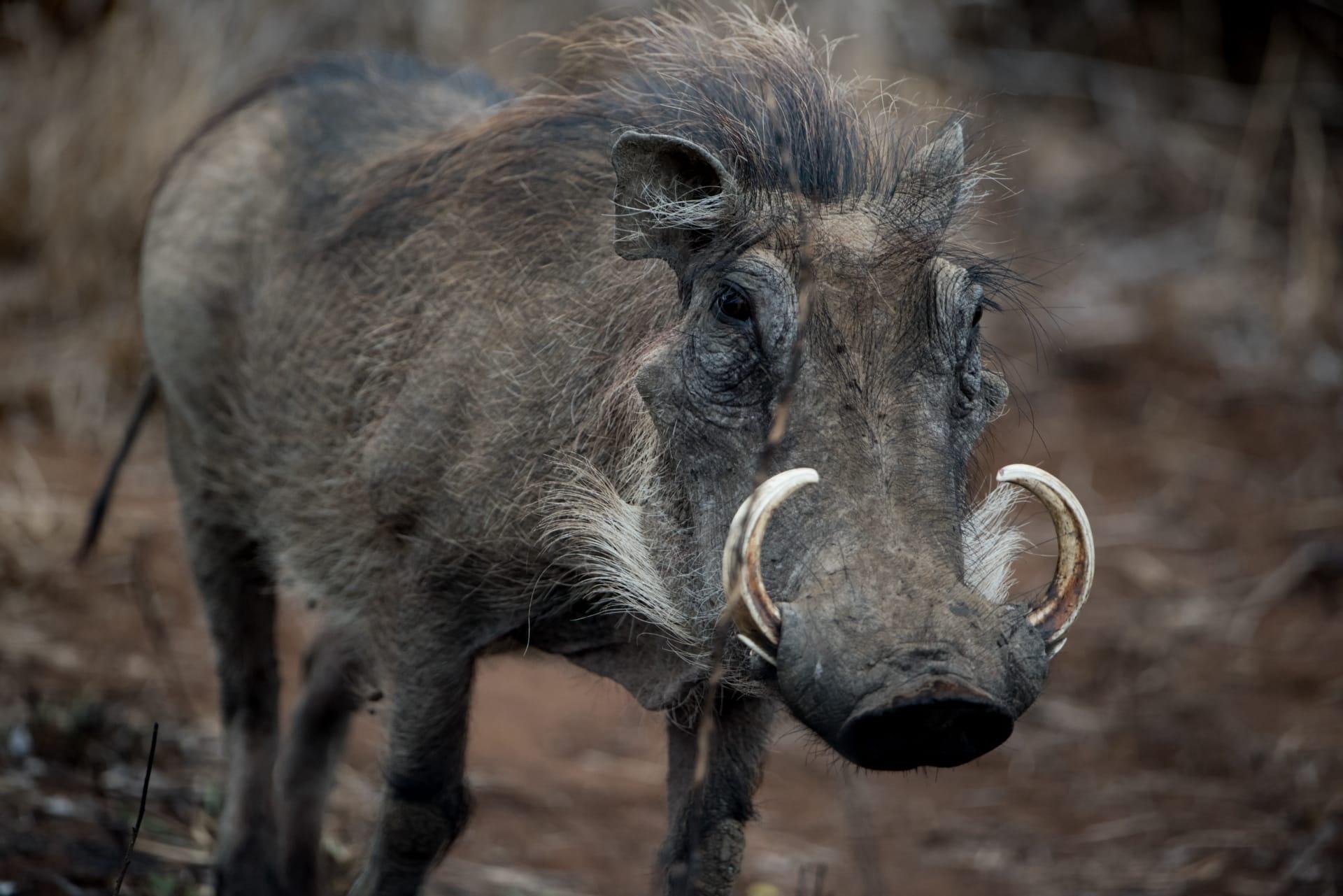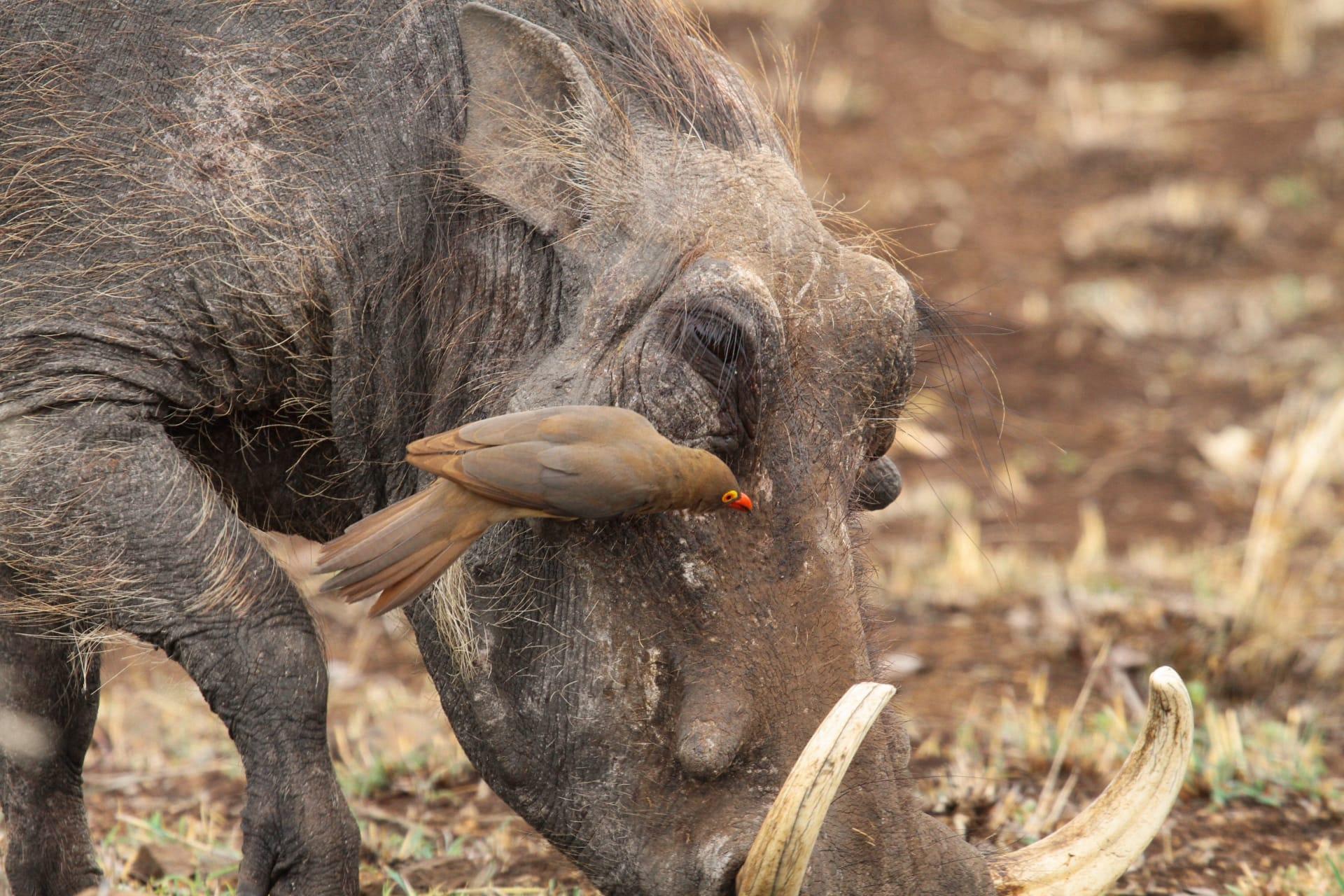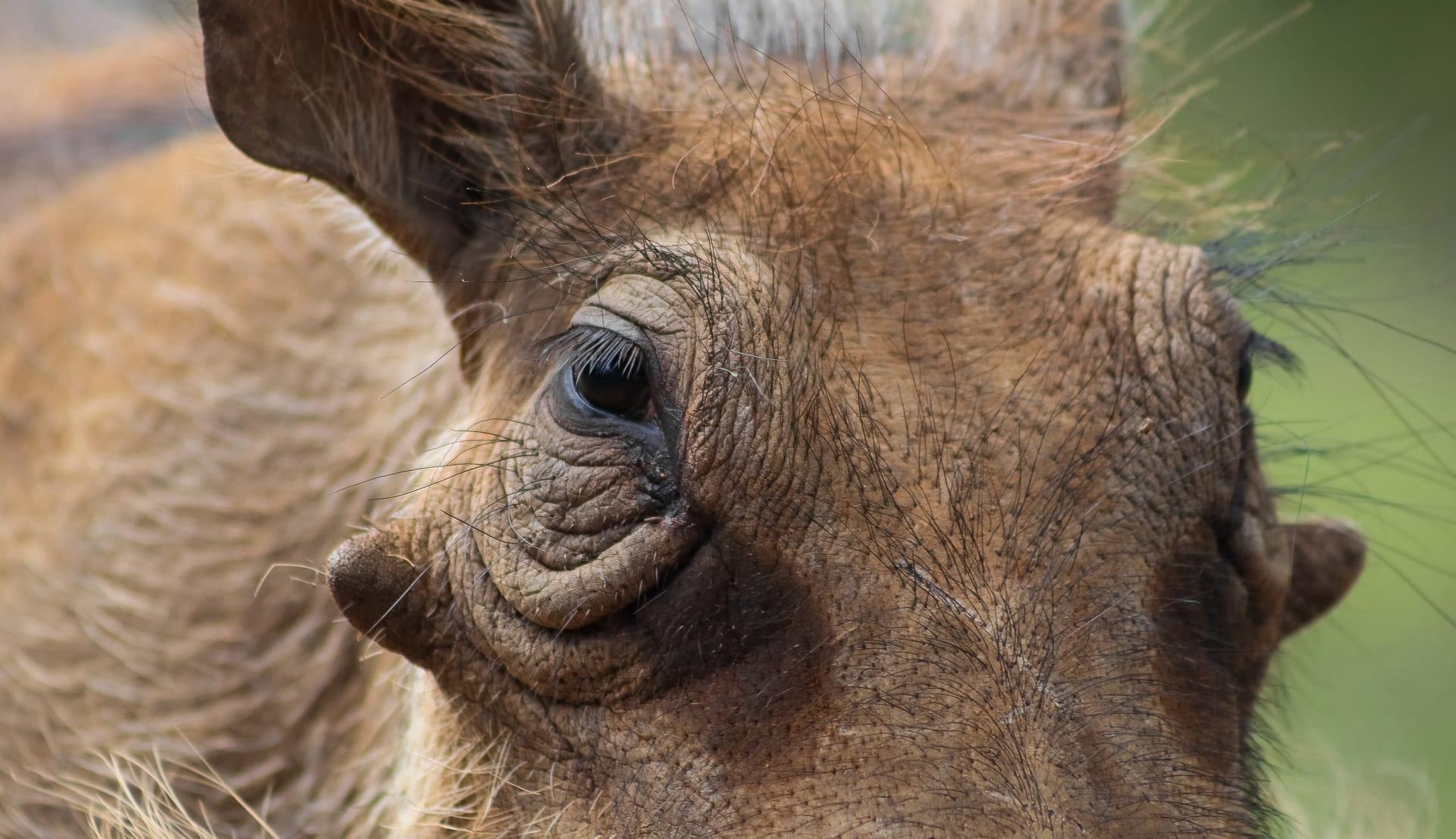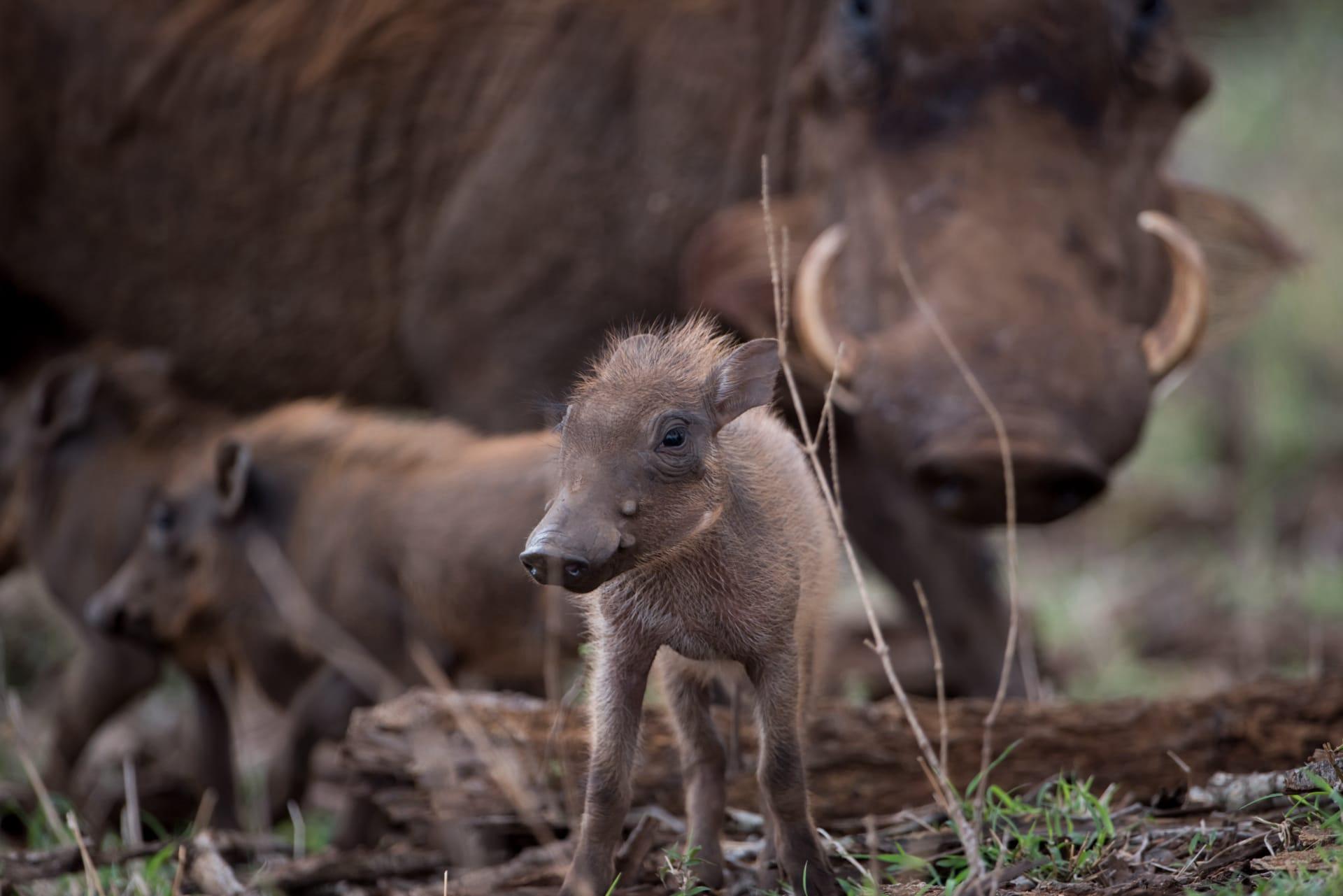1
Warthogs, those wild members of the pig family found in sub-Saharan Africa, are intriguing creatures with distinctive features. One captivating aspect of their anatomy is their tusks. These aren't just ordinary teeth; they're actually elongated canine teeth. The upper set can grow up to 10 inches (25 cm) long! These tusks aren't just for show; warthogs use them effectively for digging, fighting off predators, and jostling with each other.
Speaking of digging, warthogs have another unusual trait: their love for burrowing. Unlike other pigs, warthogs are adept at excavating. They use their snouts and powerful forelegs to dig for roots and bulbs. But that's not all – they also take over abandoned burrows of aardvarks or other animals. These burrows serve as crucial hideouts to protect them from extreme weather and predators. It's a smart survival strategy in the harsh African savannas.

2
Warthogs might not be the first animals that come to mind when you think of speed, but they're surprisingly fast runners. When threatened, a warthog can sprint at speeds up to 30 miles per hour (48 kilometers per hour). This speed is vital for evading predators in the open savannas where they live. Their agility and quickness are often underestimated, but they play a key role in their survival.
Another fascinating aspect of warthogs is their social structure, particularly their matriarchal groups. These groups, known as sounders, usually consist of females and their young. The females cooperate in rearing their young, a rare behavior among non-primate mammals. This communal care not only strengthens social bonds but also enhances the survival chances of the young warthogs in the wild.

3
Warthogs are known for their peculiar eating habits. They often kneel on their front knees while eating. This unique behavior is not just a whimsical posture; it's a practical adaptation. Their long necks and relatively short legs make it challenging to reach the ground. By kneeling, they can access grass and low vegetation more easily, making grazing efficient for them.
Another interesting fact about warthogs is their diet. While they primarily feed on grasses, warthogs are not strictly herbivorous. They exhibit omnivorous tendencies, occasionally eating small animals, eggs, or carrion. This dietary flexibility is a survival advantage, allowing warthogs to adapt to various environments and food availability in the diverse African ecosystems.

4
Did you know that warthogs have a peculiar way of defending themselves? Unlike many animals that flee or hide at the first sign of danger, warthogs often run into their burrows, backing in with their tusks facing outwards. This position allows them to defend themselves effectively against predators. The sight of those formidable tusks can deter many would-be attackers.
Warthogs also have a unique relationship with birds, particularly the oxpecker and the banded mongoose. These birds are often seen riding on the back of warthogs, eating ticks and other parasites off their skin. This mutualistic relationship benefits both parties: the warthogs get pest control, and the birds get a meal. It's a perfect example of nature's collaboration.

5
One of the more endearing qualities of warthogs is their communication. They are quite vocal and use a range of sounds to communicate with each other. From grunts and snorts to squeals and growls, these sounds play a crucial role in their social interactions. They use different sounds to signal alarm, find mates, or communicate with their young. This vocal complexity adds to the intriguing nature of these animals.
Warthogs have a remarkable ability to conserve water, which is essential for survival in their often arid habitats. They can go months without water, surviving on the moisture found in their food. This adaptation is crucial in the African savannas, where water can be scarce. It allows warthogs to inhabit areas that are inhospitable to many other species, showcasing their resilience and adaptability in challenging environments.